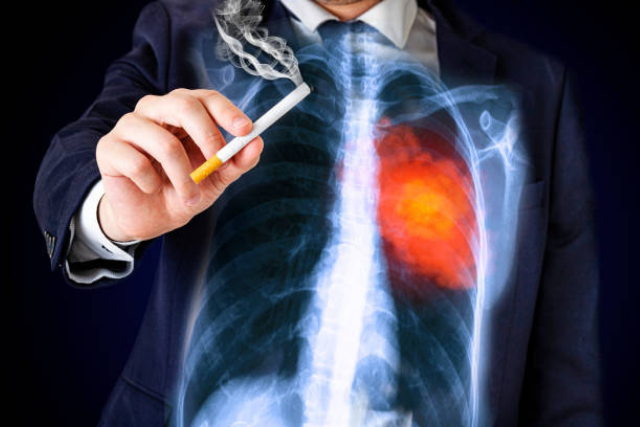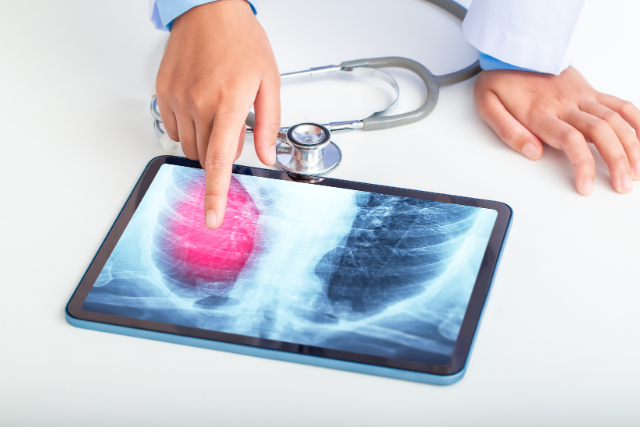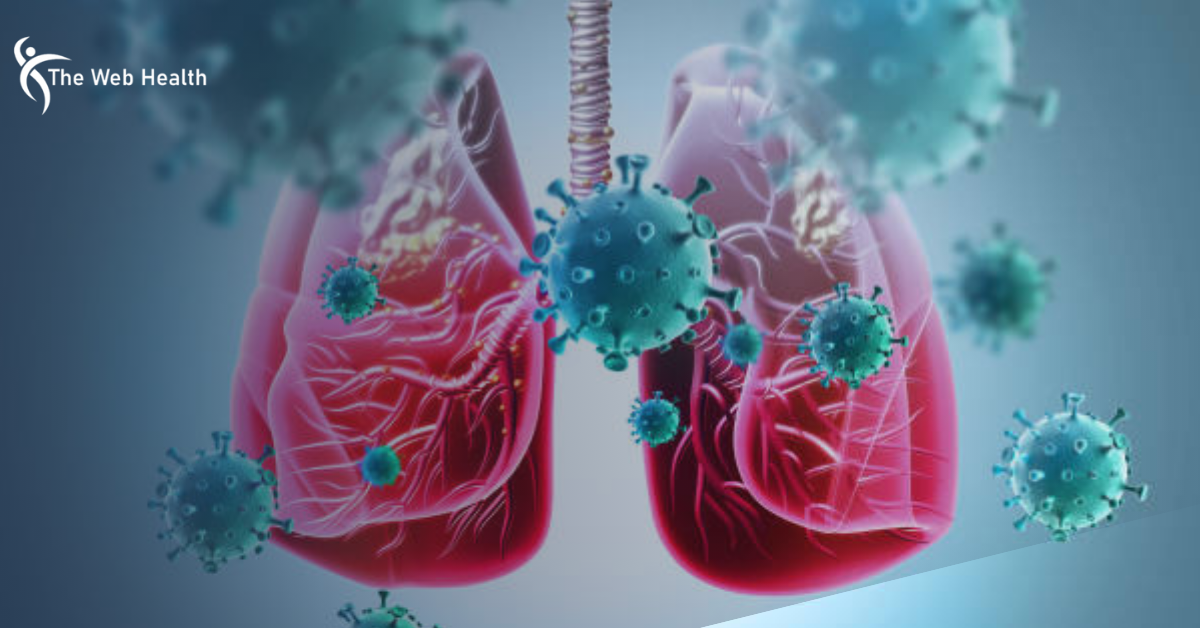Lung cancer’s brutal—it’s one of the biggest killers out there when it comes to cancer. This year alone, about 234,580 people in the U.S. got hit with a lung cancer diagnosis. Sadly, over 125,000 individuals lost their lives to this disease.
Lung cancer is usually asymptomatic in the initial stages. Symptoms such as cough, chest pain and breathing difficulties can be symptoms of other ailments that are not necessarily severe.
It’s crucial to know the causes, ways to avoid, and ways to treat lung cancer to fight this stealthy disease. The burden of lung cancer can be greatly reduced when the public is more informed and encouraged to make better life choices.
So, below, we’ll discuss everything about lung cancer in detail.
What is Lung Cancer?
Lung cancer starts when lung cells grow out of control. Normally, cells replace old or damaged cells by dividing. However, sometimes cells mutate and divide nonstop, forming abnormal tissue clumps called tumors. These tumors disrupt lung and organ function.
Specifically, lung cancer refers to cancers that originate within the lungs themselves. This often happens in the airways (bronchi or bronchioles) or the tiny air sacs (alveoli) where oxygen exchange takes place. If cancer starts in another part of the body and then spreads to the lungs, it’s called metastasis to the lungs. In this case, the cancer retains the name of its original location.
Main Types of Lung Cancer
Lung cancer falls into two primary categories: non-small cell lung cancer (NSCLC) and small cell lung cancer (SCLC).
Non-Small Cell Lung Cancer (NSCLC)
NSCLC is by far the most common—it makes up about 80-85% of cases. It includes types like adenocarcinoma and squamous cell carcinoma, which you see a lot, plus rarer forms like adenosquamous and sarcomatoid carcinomas. NSCLC can show up anywhere in the lungs, but it tends to spread slower, so treatment options are usually more varied.
Small Cell Lung Cancer (SCLC)
SCLC, on the other hand, is less common but tougher to handle. It’s aggressive and often spreads to other parts by the time doctors find it. The main types are small cell carcinoma (also called oat cell carcinoma) and combined small cell carcinoma. Because SCLC grows so fast, it usually calls for quicker and more intense treatment plans.
Other Lung-Related Cancers
Sometimes, other cancers like lymphomas (which start in lymph nodes), sarcomas (in bones or soft tissues), or mesothelioma (in the lung lining) get mixed up with lung cancer. Even though they hit close to home, they aren’t lung cancer and need different treatments.
What are the stages of lung cancer?
Lung cancer doctors stage by looking at the size of the tumor, how far it has grown into the surrounding tissues, and whether it has spread to the lymph nodes or other organs.
Lung Cancer Stages
Each type progresses differently, and factors like tumor size and spread impact the severity. For example, a Stage III tumor may actually be smaller than a Stage II tumor but is more serious due to its characteristics or spread to nearby tissues.
Here’s an overview of lung cancer stages:
- Stage 0 (In-Situ): At this initial stage, cancer remains in the lung’s lining or bronchus, without spreading to other areas of the lung or body.
- Stage I: It has not spread outside the lung and is confined to the area of the lung where the cancer started.
- Stage II: The tumor grows larger than in Stage I. It may spread to the lymph nodes inside the lung or involve multiple tumors in the same lung lobe.
- Stage III: The tumor increases in size compared to Stage II. The cancer invades the adjacent lymph nodes or other structures, or the tumors develop in different lobes of the same lung.
- Stage IV: Cancer has reached the other lung, the pleura or pericardium fluid, or other parts of the body.
Small Cell Lung Cancer (SCLC) – Limited vs. Extensive
Small cell lung cancer (SCLC) has a different staging system: limited and extensive.
- Limited Stage SCLC: The cancer is in one lung and may extend to lymph nodes on the same side of the chest, above the collarbone.
- Extensive Stage SCLC: It’s now metastatic and has spread beyond the lung. It can affect the opposite lung, lymph nodes on the other side of the chest, or other organs.
Symptoms
Lung cancer is difficult to diagnose early because its signs are similar to those of other less serious illnesses. Most of the individuals do not experience any symptoms until the disease has advanced. But for others, symptoms do develop in the early stages, and these can be from subtle to more obvious.
If you do experience symptoms, they might include one or more of the following:
- A cough that continues for more than two weeks or a cough that gets progressively worse.
- Shortness of breath or shortness of breath
- Chest pain or tightness
- Wheezing
- Coughing up blood
- A hoarse voice
- Loss of appetite
- Unexplained weight loss
- Unusual fatigue
- Shoulder pain
- Bloating of the face, neck, arms, or upper part of the chest.
- Sagging of the eyelids or a smaller pupil on one side of the face with little or no sweating (Horner’s syndrome).
What Causes Lung Cancer?
Smoking is the leading cause of lung cancer, killing both smokers and those exposed to secondhand smoke. A staggering 85-90% of lung cancer cases in the U.S. are linked to cigarette smoking. Each puff of a cigarette, cigar, or pipe delivers a lethal cocktail of over 7,000 chemicals, many of which are carcinogenic.

While smoking is the biggest killer, other factors can also increase your risk of lung cancer.
- Family History: If certain people in your family have had lung cancer then you may also be at risk for the disease. This is so because there are some genes that can predispose you to the condition.
- Workplace Exposures: Lung cancer is more likely to develop in people who work with substances that are hazardous to health such as asbestos, arsenic or certain chemicals at the workplace.
- Environmental Factors: Exposure to air pollution, especially from vehicle exhaust or industrial emissions, can also raise your risk.
- Medical Conditions: People with certain medical conditions, such as HIV infection, may be more susceptible to lung cancer.
Note: While these factors increase your risk, they don’t guarantee that you’ll develop lung cancer. The best way to reduce your risk is to avoid smoking and exposure to harmful substances.
How Do Doctors Diagnose Lung Cancer?
If you’re concerned about lung cancer, your doctor will likely follow these steps to get a clear picture of your health:
1. Medical History Check-up:
Your doctor will ask about your symptoms, such as coughing, chest pain, or shortness of breath. Plus, they’ll also inquire about your family history, as lung cancer can sometimes run in families.
2, Physical Exam:
Your doctor will listen to your lungs, check for any lumps or abnormalities, and assess your overall health.
3. Imaging Tests:
- Chest X-ray: A simple but effective way to spot any unusual shadows or masses in your lungs.
- CT Scan (Computed Tomography): A more detailed imaging test that can reveal smaller tumors and abnormalities.
- MRI Scan (Magnetic Resonance Imaging): This can provide detailed images of soft tissues, helping to assess the extent of the cancer.
- PET Scan (Positron Emission Tomography): This test can help identify active cancer cells by showing areas of increased metabolic activity.
4. Lab Tests:
- Blood Tests: These can help identify any underlying health issues that may contribute to your symptoms.
- Sputum Test: A sample of mucus from your lungs can be analyzed for signs of cancer cells.
5. Biopsy:
The gold standard for diagnosing lung cancer, a biopsy involves removing a small piece of tissue from the lung for microscopic examination.
Once lung cancer is confirmed, your doctor will determine its stage. This involves figuring out how large the tumor is and whether it has spread to other parts of your body, such as the lymph nodes or distant organs. Staging helps doctors plan the most effective treatment.
For people with small-cell lung cancer, genetic testing may be recommended. This involves analyzing the cancer cells for specific genetic mutations. By understanding these genetic changes, doctors can tailor treatment plans to target the cancer more precisely.

What are the Treatments for Lung Cancer?
The best treatment for lung cancer depends on a few factors, including the type of lung cancer, how far it has spread, and your overall health. Your doctor will consider these factors to create a personalized treatment plan.
Common Lung Cancer Treatments
1. Surgery
- Purpose: To remove cancerous tissue from the lungs.
- Who it’s for: Patients with early-stage lung cancer.
2. Chemotherapy
- Purpose: To kill cancer cells throughout the body using powerful drugs.
- How it works: Drugs are administered through IV or pills.
3. Radiation Therapy
- Purpose: To use high-energy rays to kill cancer cells.
- How it works: Radiation is targeted at the tumor.
4. Targeted Therapy
- Purpose: To attack specific cancer cells, leaving healthy cells unharmed.
- How it works: Drugs target specific proteins that help cancer cells grow.
5. Immunotherapy
- Purpose: To boost the body’s immune system to fight cancer.
- How it works: Drugs help the immune system recognize and attack cancer cells.
Additional Treatments for Specific Lung Cancer Types
1. Small Cell Lung Cancer
- Laser Therapy: Uses a laser beam to destroy cancer cells.
- Endoscopic Stent Placement: Opens airways blocked by abnormal tissue.
2. Non-Small Cell Lung Cancer
- Photodynamic Therapy (PDT): Combines medicine and laser light to kill cancer cells.
- Cryosurgery: Freezes and destroys abnormal tissue.
- Electrocautery: Uses heat to destroy abnormal tissue.
Remember, the best way to combat lung cancer is through early detection. Regular check-ups, especially for high-risk individuals like smokers, can significantly improve your chances of successful treatment.
Tips to Prevent Lung Cancer
Lung cancer is a severe disease and can be fatal. There are no ways to avoid it but one can reduce the risk by making healthy decisions.
1. Avoid Smoking
- Don’t Start: If you don’t smoke, don’t start doing it as it is very dangerous to your health. Cigarette smoking is the main cause of lung cancer.
- Quit Now: Smoking is one of the worst habits a person can have and if you are a smoker, stopping is the most effective thing you can do for your body. You can use nicotine patches, therapy or counseling to help you quit.
2. Avoid Second Hand Smoking
Second hand smoke is almost as dangerous as smoking.
- Ask Smokers to Go Outside: If someone in your home smokes, make sure they do it outside.
- Avoid Smoky Places: Select places that are smoke-free and do not frequent places where there is a lot of smoke such as bars or some social functions.
3. Test Your Home for Radon
Radon is a colorless and odorless gas linked to lung cancer. Radon testing kits are available at many hardware stores. If the radon level in your home is high, professionals can help reduce it to make your air safer.
4. Minimize Contact with Toxic Substances on the Job
Some workplaces make workers come into contact with carcinogenic substances.
- Follow Safety Rules: Always wear protective gear and adhere to the safety measures as required.
- Talk to Your Doctor: If you’re worried about chemicals, consult your physician for other means of guarding yourself.
5. Eat a Healthy Diet
Lung health is promoted by a diet rich in fruits, vegetables, and whole food products.
- Choose Fresh, Whole Foods: Go for fresh fruits, vegetables, and whole grains instead of processed foods.
- Limit Excessive Supplements: Do not take large amounts of supplements such as beta carotene because they increase lung cancer risk particularly in smokers.
6. Stay Active
Exercise helps to improve the lung capacity and also increases the body’s immunity. Try to do at least 30 minutes of moderate-intensity exercise such as walking or cycling, on most days.
Last Words
Lung cancer remains a formidable adversary, but awareness is the best weapon against the disease. The prevention, the planning, and the action taken at the right time will be effective.
If you or a loved one have symptoms that are constant such as coughing, chest pains or unexplained weight loss, do not dismiss them. Get professional help immediately—this is the best medicine.
FAQs
What are the first symptoms of lung cancer?
Lung cancer symptoms in the early stages are usually a cough or pneumonia that does not improve. These symptoms can also point to less severe diseases and it is always advisable to seek medical attention.
How long can lung cancer go undetected?
Lung cancer is often asymptomatic, and the tumor may grow undetected for many years. Lung cancer in the initial stages may not show any symptoms. Screenings should be done frequently especially among the high risk groups and the elderly.
How does smoking cause lung cancer?
Cigarette smoke goes straight to your lungs. The chemicals in tobacco kill the cells that line your respiratory system. Your body rebuilds this damage with each puff, but repeated exposure breaks down your immune system. This may cause cell transformation and uncontrolled cell division that causes lung cancer.
Is vaping safe for your lungs?
Vapes, also known as e-cigarettes, deliver a flavored nicotine in a mist. Although they may not appear to be dangerous, there is increasing evidence that they might actually be unhealthy and, in fact, detrimental to lung health.
Can you get lung cancer without smoking?
Yes, you can develop lung cancer even without smoking. Approximately 20% of lung cancer cases occur in people who never smoked. It’s crucial to be aware of your body and seek medical attention for unusual symptoms like coughing, chest pain, or shortness of breath.


